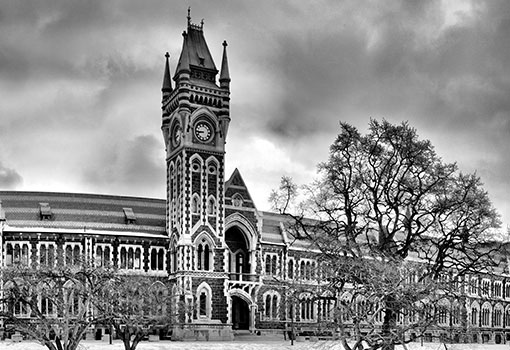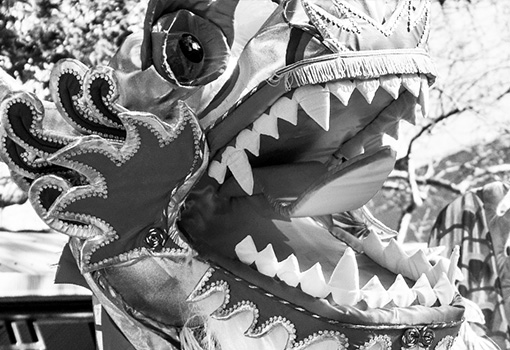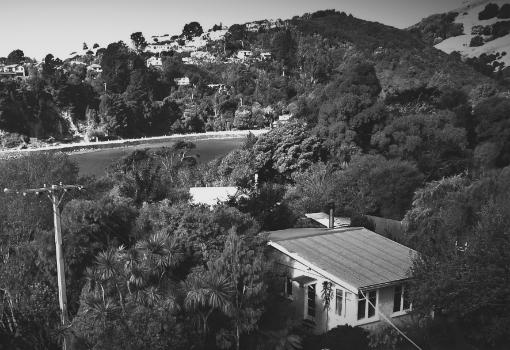
The falcon on Taieri Ridge
By The Spinoff - Neville Peat | Posted: Tuesday Feb 18, 2025
The falcon on Taieri Ridge | The Spinoff
Neville Peat is the 2024 recipient of the Prime Minister’s Award for Literary Achievement in nonfiction. He’s written 56 books, mostly on natural history; this excerpt is from The Falcon and the Lark: A New Zealand High Country Journal, first published in 1992.
The falcon wintering on the Rock and Pillar Range has lived quietly and reclusively for a couple of days. She has fed on rabbit – the rabbit she caught napping on the mountain’s lower slopes where the tussocks thin out. Fully grown but not fully wise to the ways of predators, the rabbit had been waiting at a crouch for the morning sun to release the grass from the grip of frost. It neither saw nor heard the attack. The falcon dived out of the sun, a silent missile. For attacking winged quarry, the bird tended to sound the charge – a lusty, deep-throated scream: “Kek-kek, kek-kek, kek-kek, kek-kek!” Against the rabbit, though, she merely flew with all the speed she could muster. Maybe the falcon realised there were times when advertising did not pay: a rabbit could escape into a burrow.
The rush of air coincided with the burying of talons deep into the rabbit’s back. In a reflex action the animal rose to its feet and lunged forward half a metre under the weight of its attacker whose wings were outstretched for balance, tips drooping. But that was the only move the rabbit made before the black bill scythed into the fur behind its head, bit, twisted and stilled all movement.
Satisfied the rabbit was dead, the falcon ripped hungrily at the fur and flesh, and swallowed each bite with head up and eyes alert to anything which might disturb her feeding. She ate her fill. This did not dispose of all the meat on the carcass, though, so she quartered it and flew off with a hind leg, her destination a rock crevice where she frequently cached food.
Now, having started the day bathing and preening, she inspects the cache and hauls out a decaying rabbit leg. It is not very appetising; the falcon is accustomed to fresh meat.
She tosses the fragments about with her beak as if annoyed to find the cupboard all but bare. Then she wipes her bill against the rock, methodically, each side of the beak in turn. It is a gesture commonly associated with feeding, called feaking. In this case it may signal a hunger unsatisfied. She must hunt again. Within the hour.
Without doubt she could find prey on the face of the mountain or around the summit, another rabbit even. But this morning she has Taieri Ridge in her sights, the opposite side of the valley. Perhaps she recalls a hunting success in conditions similar to those of today. A breeze is wafting out of the northwest, a tailwind to Taieri Ridge, hinting of a gale by afternoon. There is some high cloud but no rain in sight.
Her objective is in clear view – the Crater, specifically a splash roost not far from the volcanic formation. This is still within her territorial limits, although in the winter season, fending for herself, she feels free to range outside the limits.
She pushes off from the rock crevice, content to glide a little before picking up speed with some quick wingbeats. By and large she cannot sustain a glide as long as a harrier on account of her higher wing loading. The short wings/long tail configuration of the falcon is designed for speed and manoeuvrability; the harrier, with long wings and a relatively short tail, specialises in soaring and gliding. Accordingly, the falcon transits the valley by combining a bit of gliding with bursts of powered level flight.
Having launched from a point high on the mountain, she flies well above the valley floor and the disquieting, though not intimidating, activity of humans and their machines – above, too, the quartering patrols of an occasional harrier. If people below notice her flight at all at this hour, with the sun new born, they will be inclined to think they are seeing a high-flying harrier, although they might wonder at the swift and direct nature of the flight, uncharacteristic of the wheeling harriers. It is the difference between a scheduled flight of some duration and a local sightseeing tour.
Little escapes the notice of the falcon despite her altitude. Her eyesight is thought to be about six times more powerful than that of humans. She observes movements as large-scale as the first feeding-out of the day on farms, someone ploughing before breakfast, and household coal smoke bending in the breeze; and movements as subtle as a pair of grey ducks sneaking along the river bank beneath leafless willows, and two white-backed magpies standing motionless on the white backdrop of a frosty paddock. Nothing below her is to be feared. But there are things to be wary of. She will not go out of her way to provoke a mob of magpies, whose aggression she respects. Nor will she lock talons with a harrier without good cause.
On this fine winter’s morning she fancies smaller, more customary prey – the birds of the open fields, which flock in number on the gentle western slopes of Taieri Ridge. She is overhead a few such flocks on the plains north of the township but resists an indiscriminate swoop on them. Her hunting methods are founded more on discipline and strategy, and known air space. Usually this means attacking from a roost.
On course for her roost near the crater, the falcon loses height gradually in bursts of gliding. She crosses the river and catches sight of noisy activity beside some buildings where yarded sheep are being driven into a shed by humans and dogs. There is no slacking of her flight, however, which from this point begins to meet the rising ground of the ridge. She sees her roost four kilometres ahead and within a few minutes has the familiar buttress beneath her feet, her pulsing breast feathers the only sign of exertion.
The rock face beneath where she now stands, enjoying the respite, is splashed white with her uric acid, the evidence of repeated take-offs from this roost in the past. She knows the lie of the land around here intimately. Opposite her is the crater, a shallow bowl about 250 metres in diameter, rimmed with volcanic boulders. In the centre is a small lake, obscured from her view.
From a distance the crater appears countersunk into the surrounding expanse of schist, its volcanic lips seemingly all there is to show for such a remarkable anomaly in the landscape.
At closer quarters, though, it impresses as the crown of a hill flanked on every side by stream-filled gullies which give it an identity separate from the surrounding country. These encircling gullies provide, for a raptor, scope for some cut and thrust in a chase.
The falcon waits, statue still, eyes full and unblinking. Although upright on her roost she produces no silhouette because the rock outcrop extends above her. Her camouflage is convincing. You need to be looking straight at her to distinguish her dappled front from the folds and variegations of the rock.
A flight of yellowhammers, frisky, gregarious birds in winter, approaches the crater area from the lower slopes of the ridge. There are 20 or more of them. The group moves as one, rapidly, but individually the birds move with dipping, looping movements as they close their wings momentarily. They fly in prospect of food – seeds and insects. The hay of winter feeding-out is a favourite target and good pickings may also be had around ponds and streams. The crater lake is a destination this morning.
The falcon has them in sight but not for long. They are obscured by the crater hill. Then they top the rim and descend into the bowl where they are again obscured from the falcon’s gaze. But she knows their habits, knows where they will land.
Now she indulges in two small but distinctive movements – first, an alternate kneading and clutching of her feet, a sign of keenness, then a bobbing of her head, which helps stir her blood and sharpen her wits. She assesses a flight path.
Suddenly she departs the roost, defecating the moment her feet are airborne. The rock face below is a smidgen whiter.
The Spinoff Books section is proudly brought to you by Unity Books and Creative New Zealand. Visit Unity Books online today.



